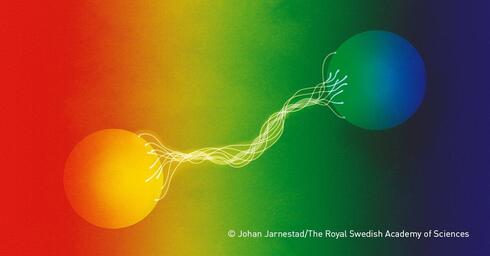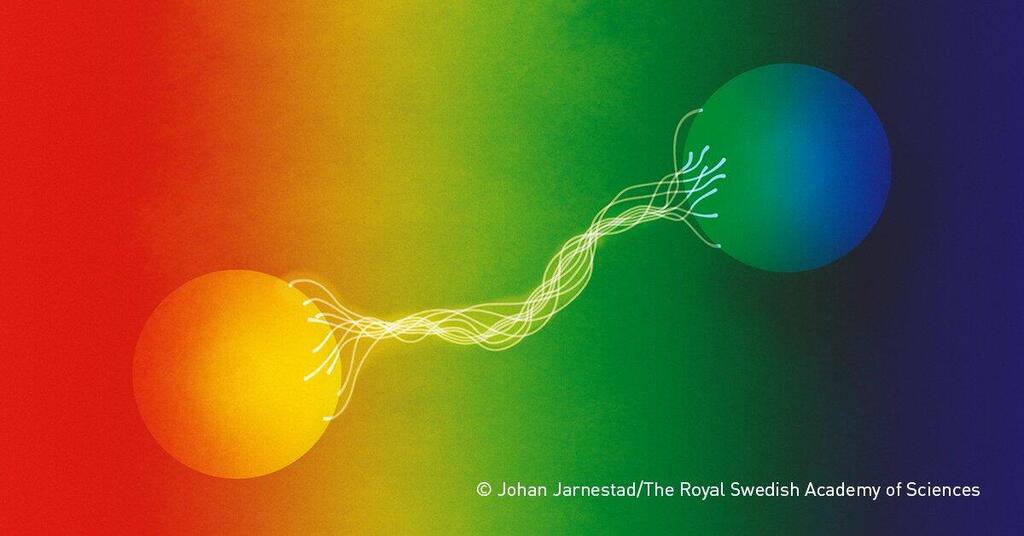Physicists at the Massachusetts Institute of Technology (MIT) have successfully recreated one of the most important effects in quantum mechanics: the “Elitzer-Weidmann bomb test apparatus.” Amazingly, they did this in a completely classical system, meaning they observed a quantum effect in a system that derives from everyday physics. This achievement intensifies the question of what really distinguishes quantum from classical.
In 1993, Israeli physicists Avshalom Elitzar of the Weizmann Institute of Science and Lev Weidman of Tel Aviv University proposed the following thought experiment: Imagine you have a bomb with an ultra-sensitive trigger that explodes when it is touched by a single particle. As long as the bomb is stored safely, no particle can touch the trigger, and you can control the timing of the explosion. However, it is possible for the bomb to malfunction, so that even though it looks like a normal bomb, it doesn’t explode when you touch the trigger.
Suppose you find an old bomb in a vault and want to determine if it still works properly. In everyday physics, the only way to test a bomb is to attempt to detonate it: if it works properly, it explodes, if it doesn’t, it remains. The problem with such a test is that it destroys a functioning bomb, preventing its future use. You need a way to both “test and deactivate” the detonator.
The “both yes and no” option will sound familiar to anyone interested in quantum mechanics. A quantum particle can exist in a mixture of several possible properties, such as not being close to the bomb but not too far from it, and it will remain in a state that combines the possibilities of being in one of these positions. This state is called a superposition. As long as the particle is not measured, that is, as long as there is no external factor that tries to observe the particle and determine its location, the particle will remain in a mixture between the states that activate the bomb and those that do not. If we observe and measure the particle’s position, the particle will “collapse” and no longer be in a mixture position, but will only appear in one place, just like any object in classical physics. This means that simply observing the particle will affect its position. Note that we cannot choose where the particle will decay, we can only cause it to decay.
Elitzer and Weidmann proposed a way to use quantum particles to test the bomb without detonating it. They proposed passing a photon (a particle of light) through a beam splitter. The photon’s trajectory would be in a superposition of two possible directions, i.e. the photon would be in a mixture of two possible trajectories. One trajectory would go through the bomb and the other would not touch the bomb. The trajectory would then be redirected to intersect with another beam splitter, pointed in the opposite direction to the previous beam splitter, and finally the photon’s trajectory would be measured.
Because the measurement is made last, by the time the particle reaches the second splitter it is in a mixed state and does not “choose” a particular path. When a measurement is made, the photons will converge to a particular path. The photons could converge to a path with a bomb, causing an explosion and indicating that a bomb was present, but is now not. However, they could also converge to a path without a bomb. In this case, the presence of the bomb will leave a residual effect on the photon’s position, making it noticeable.
The bomb experiment demonstrates the use of the fundamental principles of quantum mechanics: superposition and measurement. Another important principle of quantum mechanics is wave-particle duality, which means that mixed positions of quantum particles also exhibit wave-like properties. Therefore, when light particles are passed through a beam splitter, wave behavior such as interference occurs.
When a photon passes through a beam splitter (optical device), it behaves like a wave of light. If a single wave arrives, it is split into two directions. If two waves arrive, they combine into one wave. This is also true for photons. If a photon reaches an absolute position with no superposition, its position changes and it gets mixed. If it reaches a mixed position, the photon changes to an absolute position.
After splitting, the photons are in a superposition state, i.e. there is a 50 percent probability that the bomb will go through one path and a 50 percent probability that it will go through the other path. A mirror is added to direct the photons to another splitter. If the bomb was a dud, the photon will split, not encounter anything interesting on its path, and will recombine at the second splitter. Hence, the photon will not be at the mixed position, as the second splitter converts the mixed position to an absolute position. Thus, if the bomb was a dud, the photon will necessarily continue forward towards detector D.
If the bomb has exploded, there are two possibilities after the measurement. In the first scenario, there is a 50 percent chance that the photon will get through the bomb and explode, and we will fail to identify the bomb. This is the least interesting possibility. In the second scenario, there is the same 50 percent chance that the photon will not get through the bomb, but will reach the second splitter and be split. Now we have a 50 percent chance of measuring the photon at detector C. If we find the photon there, we know for sure that the bomb has exploded, even though it was not the photon that caused the bomb to explode.
Elitzer and Weidmann’s method was able to identify live ammunition in a quarter of cases, compared with none using classical physics, and further development could significantly improve this success rate.
This idea is important because it is one of the fundamental examples of how quantum measurements can accomplish tasks that are impossible using classical methods alone. It highlights a fundamental difference between classical and quantum mechanics: superposition and the effect of measurements on quantum systems. While the experiment itself has no practical application, it deepens our understanding that quantum systems are fundamentally different from classical systems. This understanding is the basis for many current quantum technologies, including quantum computers.
However, researchers have now succeeded in recreating this effect in the laboratory using only classical particles. To achieve this, they exploited the strong particle-wave connection in quantum mechanics and the fact that functions describing superpositions of particles behave like waves. In their experiment, oil droplets floating in liquid silicon represent the particles in the bomb experiment. The waves in the liquid silicon represent the wave elements at the particle’s position and the trajectory left by the particle on the unselected path through the bomb by interference.
The researchers’ success rate in identifying the “bombs,” depicted as small blocks in a pool of liquid, matched the expectations of the Elitzer-Weidmann experiment: instead of using quantum particles that combine particle and wave properties, the researchers used classical particles and ordinary waves in a liquid to achieve similar results.
The researchers’ key achievement is that they used mimicry of the quantum world to identify bombs on classical scales – a seemingly impossible task. Mimicking nature is a valuable and important tool in any scientific field, for example when mimicking the structure of the human brain in machine learning algorithms or replicating the properties of photoreceptors on butterfly wings to manufacture solar cells. Here we have a novel application of this principle, and it is intriguing to speculate what additional quantum systems could be conceptualized using classical scales.
However, it’s important to remember a big difference between quantum and classical systems: A quantum experiment uses one component, a quantum particle that has properties of both particles and waves. A classical recreation uses two separate components, one particle and one wave. Moreover, if you want to recreate an experiment with many more quantum particles, you’ll need waves made up of many components. Waves become so complex that they’re too complex to generate even in a system with only a few dozen particles.



